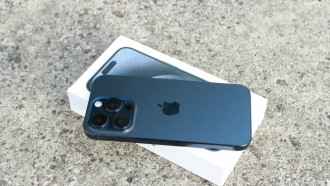The 25-kilogram CAPSTONE spacecraft by NASA became the first cube satellite (CubeSat) ever to reach Earth's closest neighbor, the moon.
To mark the occasion, NASA published a short statement saying that the engine run had concluded successfully on Sunday night, Nov. 13, at 7:39 PM EST.
The Mission
Space.com reported that through this operation, CAPSTONE (an acronym for "Cislunar Autonomous Positioning System Technology Operations and Navigation Experiment") was placed into a near-rectilinear halo orbit (NRHO) around the moon, a highly elliptical route that NASA's Gateway space station will also use.
Crucial to NASA's Artemis lunar exploration program, the launch of the first sections of Gateway is scheduled for 2024.
However, before launching CAPSTONE, the agency wants to gather additional information regarding NRHOs on the moon.
The spacecraft, about the size of a microwave oven, will spend at least six months in space to confirm the orbit's presumed stability.
Additionally, CAPSTONE will conduct tests of communication and navigation in conjunction with NASA's Lunar Reconnaissance Orbiter, which has been circling the moon continuously since 2009.
But CAPSTONE still has to fine-tune its trajectory around the moon before it can begin its mission, according to Space.com's article.
Colorado-based Advanced Space, which owns and manages CAPSTONE as a CubeSat for NASA, provided an update late Sunday, saying, "Two smaller correction maneuvers will take place this week to ensure the spacecraft is confirmed into the complex lunar orbit."
See Also: NASA To Bring Columbia Sportswear, Intuitive Machines Collaboration To Land on Moon in 2023
A Few Setbacks
There were several hiccups on CAPSTONE's way to lunar orbit.
On June 28, atop a Rocket Lab Electron launcher, the probe lifted off and began a 4.5-month-long winding journey that followed the planet's gravitational contours.
On July 4, shortly after the probe detached from Rocket Lab's Photon spacecraft bus, the CAPSTONE team lost touch with the probe. They found the issue, which was a badly formatted command, and corrected it the same day to bring CAPSTONE back up.
Two months later, CAPSTONE encountered more difficulties. The probe started to fall and enter a precautionary safe mode on Sept. 8 when a problem occurred during a trajectory-correcting engine burn.
The mission crew identified the malfunctioning valve in CAPSTONE's propulsion system, and after some adjustments, the probe was able to resume its historic lunar arrival as intended.
More CubeSats in Space
If all goes as planned, Space.com reported that more CubeSats would soon join CAPSTONE in space.
Launch of NASA's unmanned Orion spacecraft for a shakeout cruise to lunar orbit is planned on Nov. 16 as part of the agency's Artemis 1 moon mission. Some of the ten ride-along CubeSats that Artemis 1 will loft are also dedicated to lunar research.
One of these tiny spacecraft, the OMOTENASHI from Japan (which stands for "Outstanding Moon exploration Technologies shown by Nano Semi-Hard Impactor"), will even place a little lander on the surface of the moon.
Related Story: NASA Artemis 1 To Send Cubesat That Will Follow an Asteroid Using Solar Sail! But, Why?
This article is owned by Tech Times
Written by Trisha Kae Andrada





